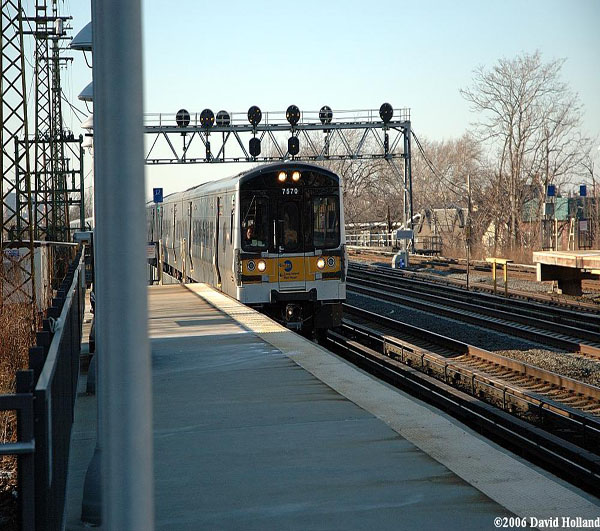Quote:
Originally Posted by TexasBoi

Thanks electricron. I still think the region itself could work with a typical heavy metrorail system but that could probably come in due time. So the DCTA will run Light Trains? Similar to what Austin is building?
|
Yes! DCTA is buying 11 Stadler GTWs for the 21+ mile line between downtown Denton and the Trinity Mills Station in Carrollton. It'll be running on the ex-MKT (Katy) freight single track railroad corridor. Almost half the tracks had been removed from the corridor and the tracks on the other half were in very bad shape, so DCTA will replace every inch of mainline track with new. DGNO sends one freight train a day as far north as Lewisville today. DCTA plans to get temporal separation from the FRA so both freight and light non FRA compliant passenger trains can use the same tracks, but not at the same time. The sole freight train a day will be able to use the tracks very late at night (or very early in the mornings).
NJT considers these trains diesel powered light rail. NCTD considers these trains non FRA compliant commuter rail. CapMetro tried to call them both. DCTA calls them commuter rail or new technology light rail. This relativity new to the USA diesel powered light train is hard to classify. I prefer light train to distinguish them from light rail, just like I prefer to classify streetcars differently from light rail. In Europe, trains like these are called DMU, and there are identical in appearance EMU sisters.
The total costs, including a paved bike/hike path on half the corridor, five train stations with park & ride lots, 11 DMU trains, and 21 miles of new rail is approximately $310 Million. That's around $15 Million per mile. Just the track work alone costs $200 Million, around $10 Million per mile. That's far cheaper than DART can build light rail lines, which average from $40 to $60 Million per mile.


Compared to DART, DCTA saves on construction costs by eliminating electrification of the entire line, and by eliminating the second main track by having longer headways between trains. In the future when demand increases, more second main track can be added; when EPA requires cleaner trains, DCTA could buy EMU versions of their DMUs and electrify the line. Compared to the TRE, DCTA saves on operation and maintenance costs by using much lighter trains.
But DCTA DMUs will never be able to move as many passengers per hour as the TRE. The DCTA stuff to capacity DMU vehicle can carry 200 passengers each, and with a limitation of three coupled cars, a maximum of 600 passengers per train. The TRE BiLevel cars can also carry 200 passengers each. But each TRE train can have up to 11 cars, depending upon the horsepower of the locomotive, potentially 2200 passengers per train. Of course, the TRE would have to lengthen most train station platforms if they ever plan to push-pull that many cars.
Dart demands a FRA compliant DMU passenger train for the entire Cotton Belt. The existing Stadler GTW trains is not FRA compliant, which is why NJT, CapMetro, and DCTA require Temporal Separation waivers from the FRA. Therefore, the DART photoshop version of this partially low floor train will probably never be seen, but a variant all high floor version might. DART is working with several vendors, including Stadler, to build a new FRA compliant DMU, sized similar to these or DART light rail vehicles.
All FRA compliant passenger cars and EMUs built today are sized like the TRE RDCs.


Note: No one builds DMU versions that are FRA compliant anymore.



